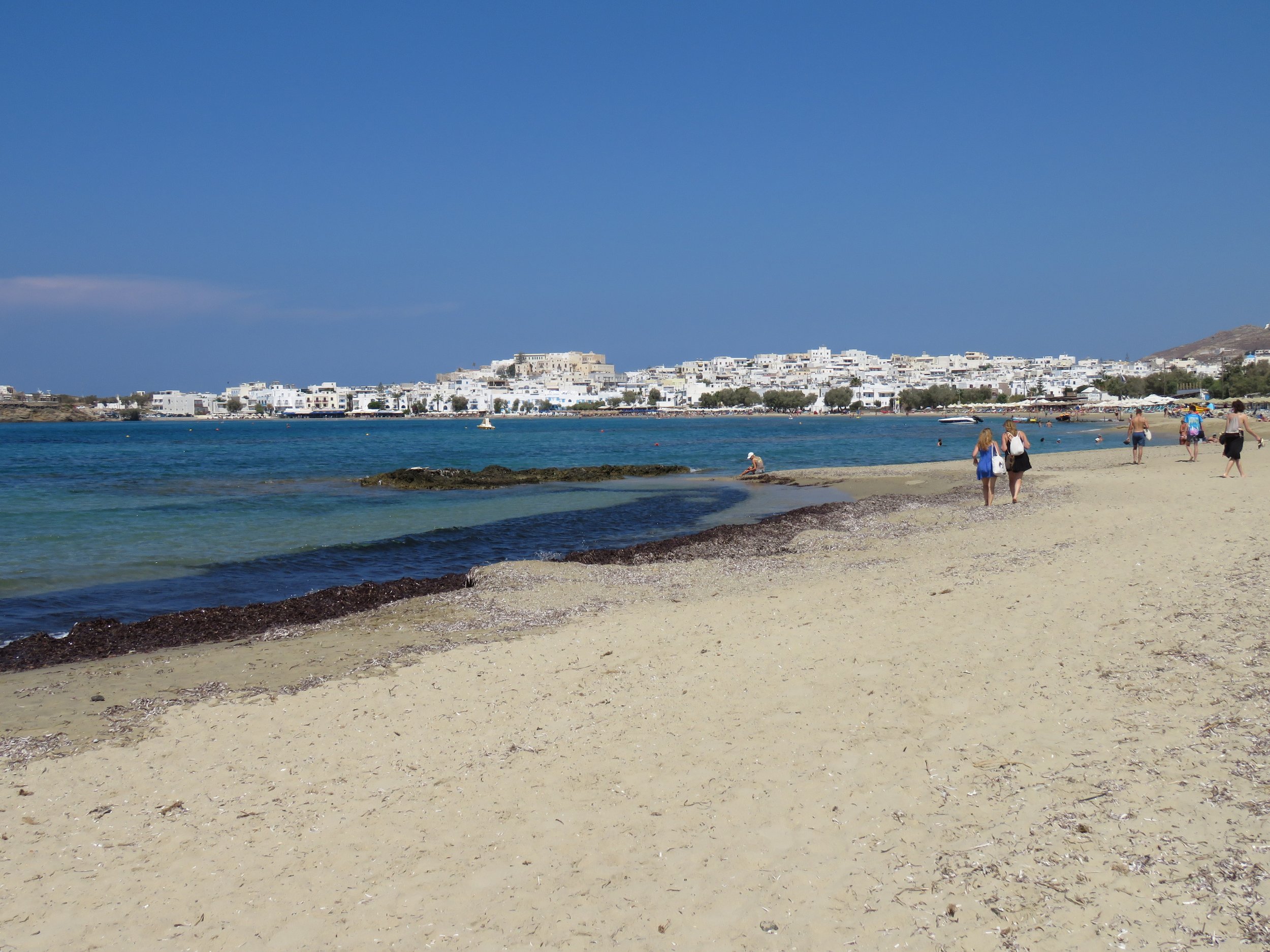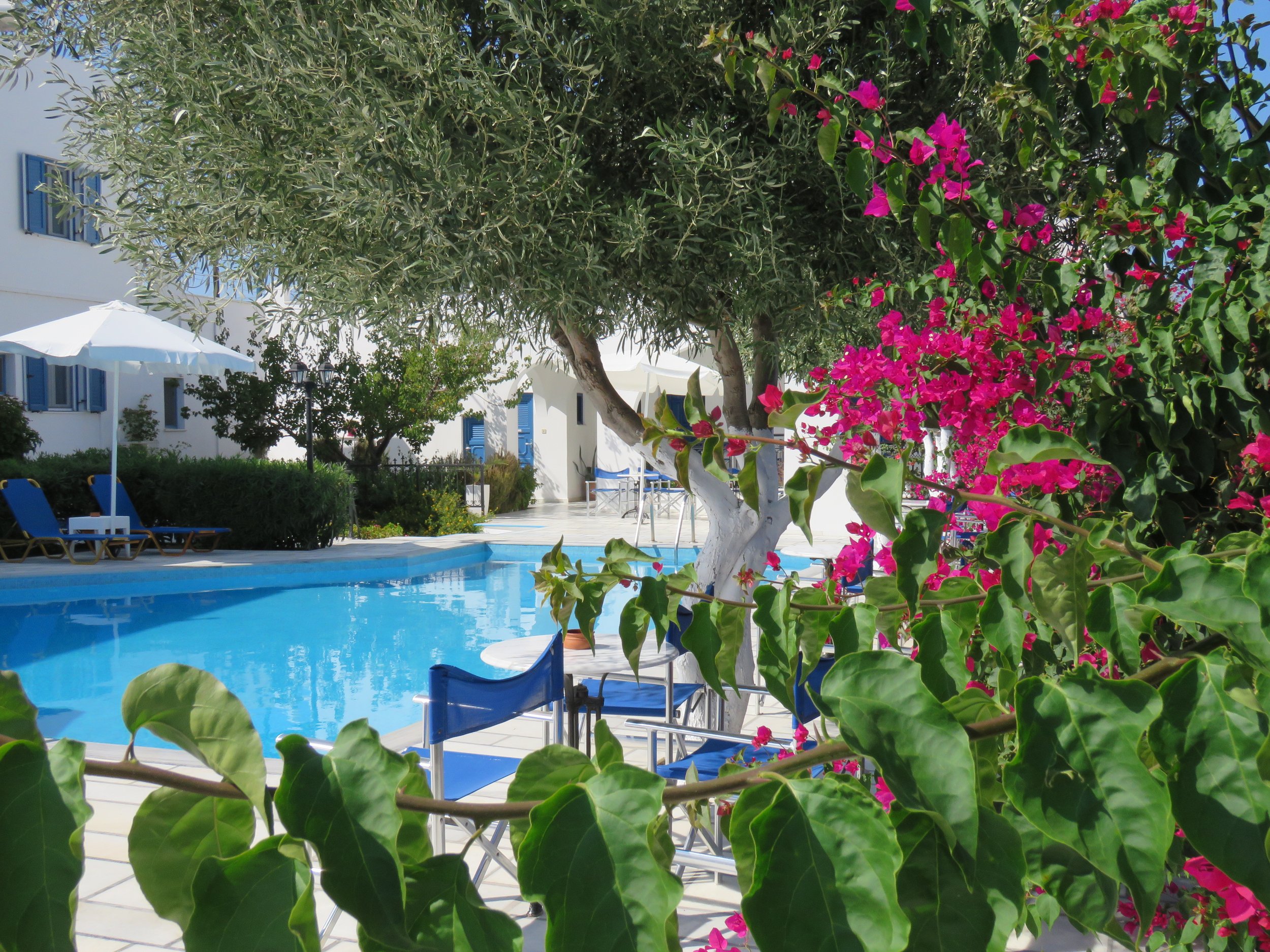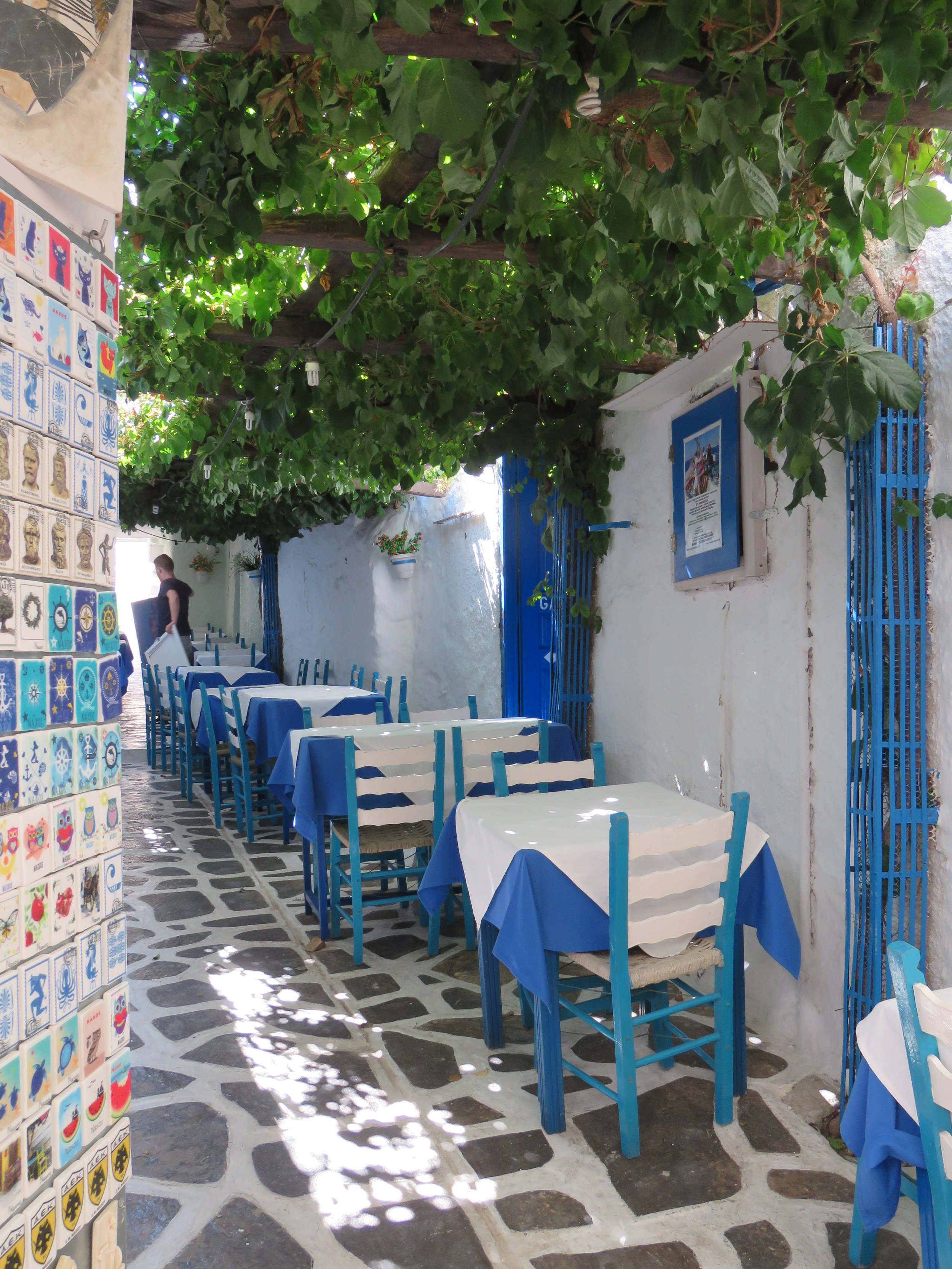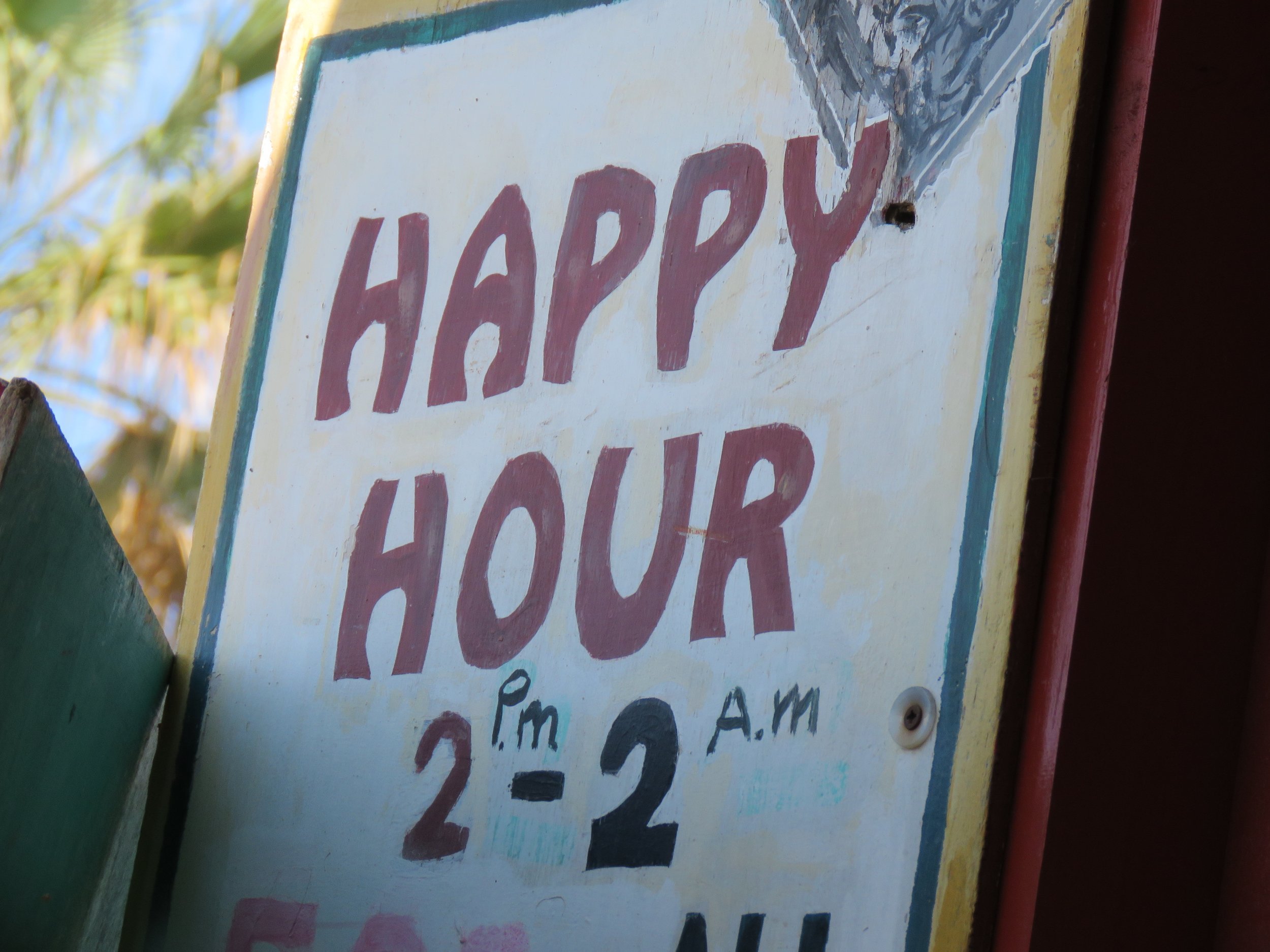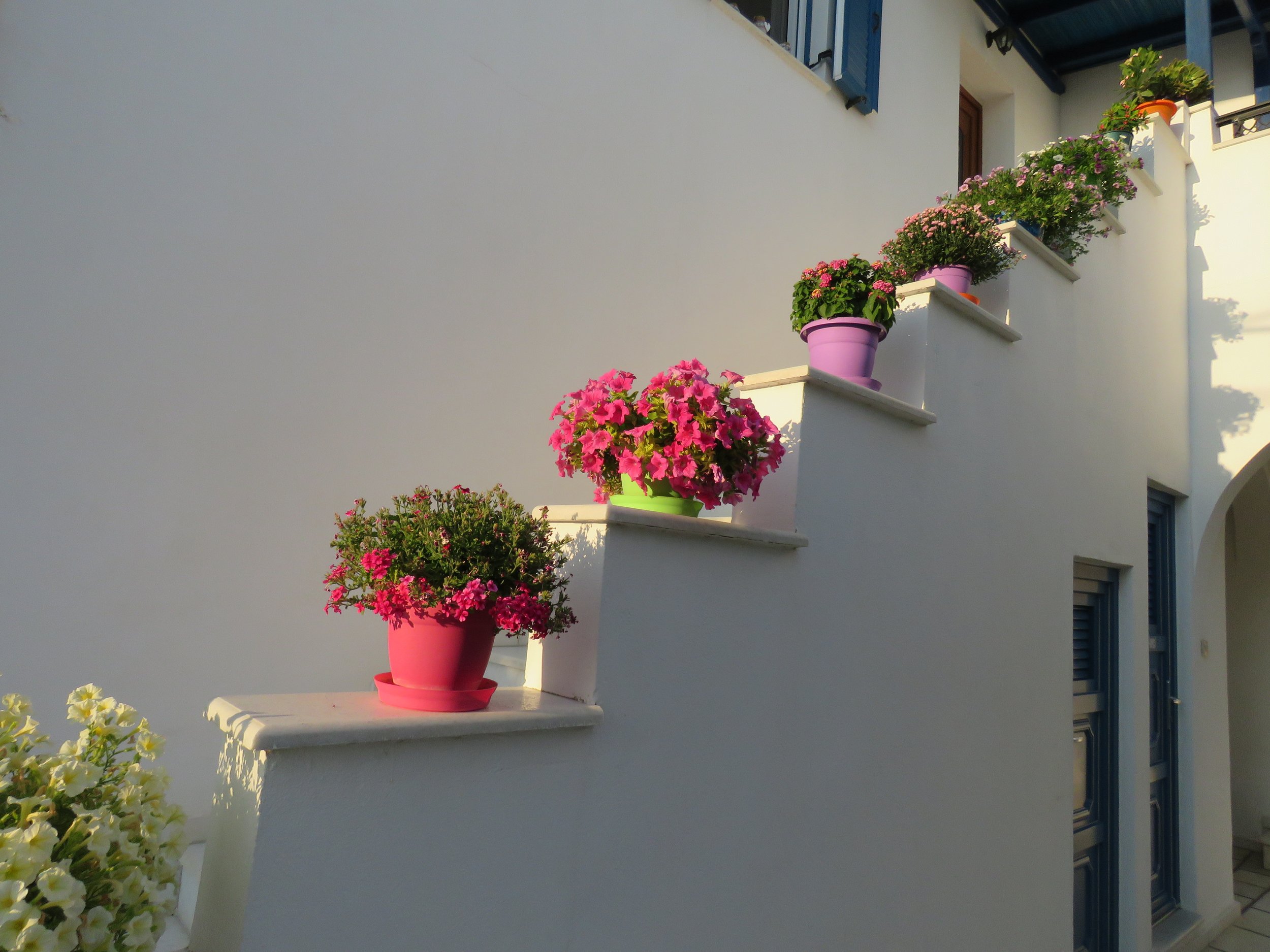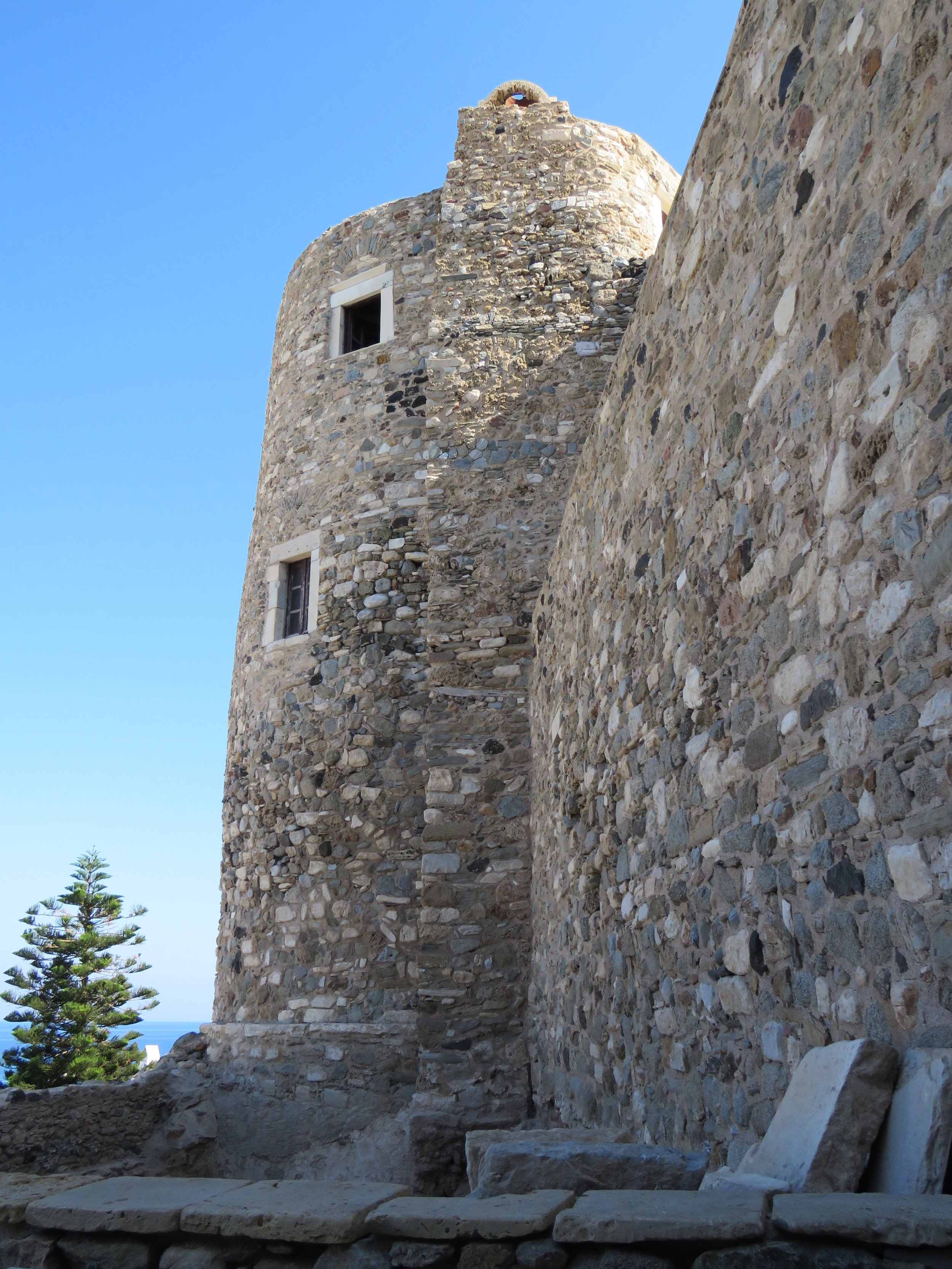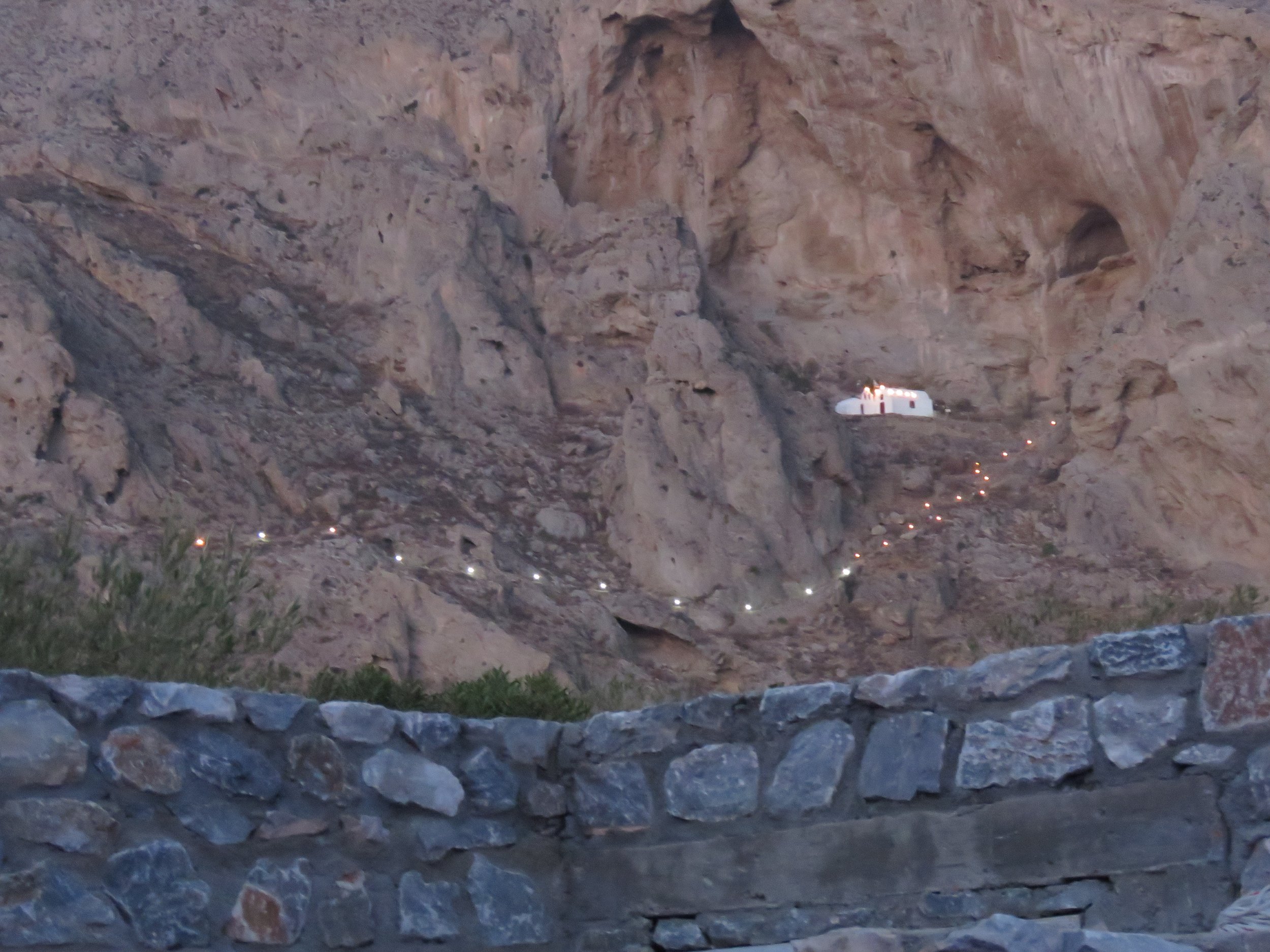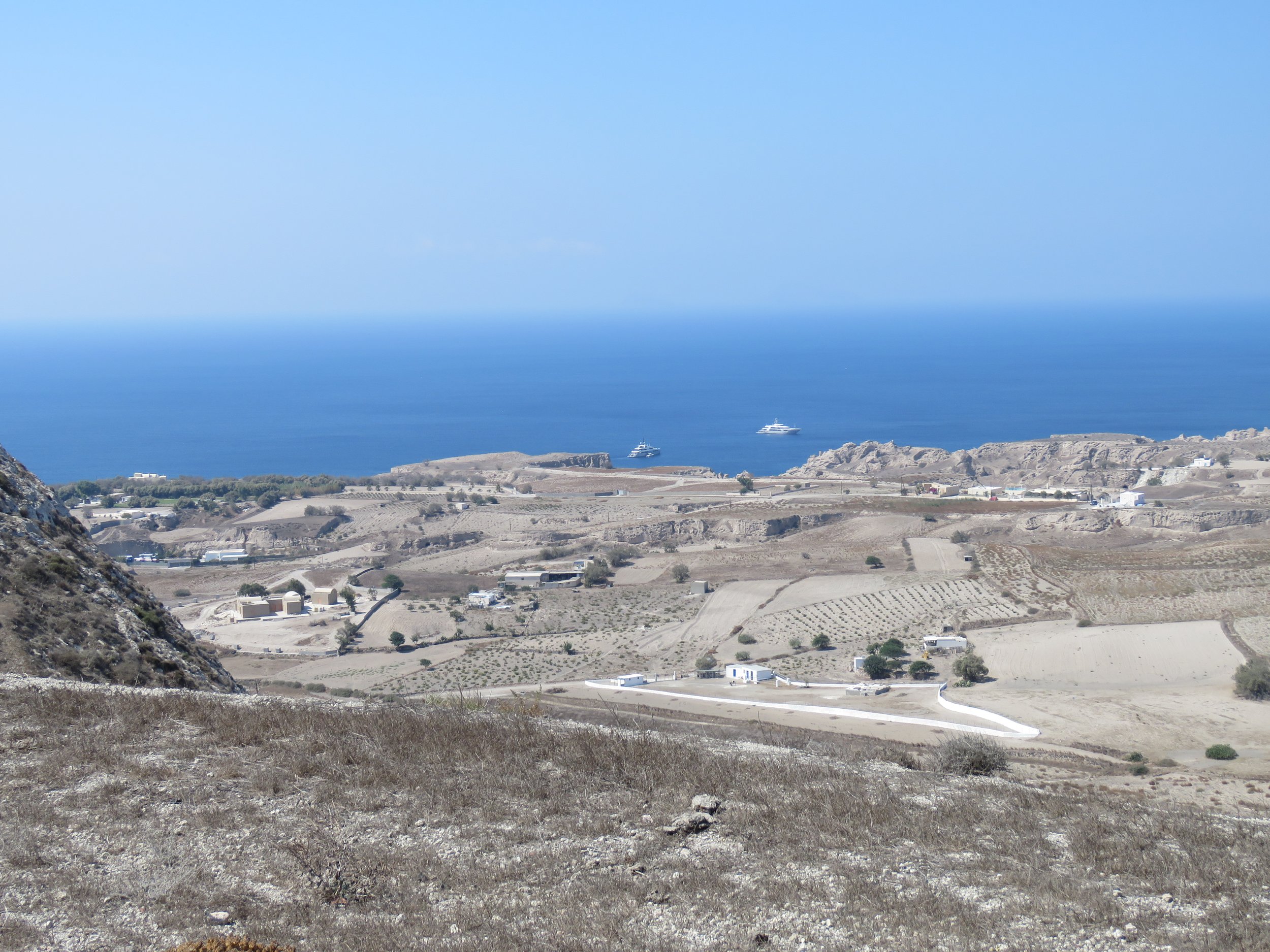Listening to Greek spoken all around me, I find that it sounds like a blend of Italian, Spanish with a hint of Russian. I can’t get over the signs with Greek announcements. No idea what they say, but the length of the words is fascinating. Names, too, are longer than names elsewhere: Constantinides Oikonomopoulos is an example of a common name. Our guide for the day has shortened his name, for the sake of tourists, to Cosmos but it was four times longer than that.…
After having spend time in and around Athens we are headed for a few of the Greek Isles. With so many islands to choose from, which ones do you pick to visit? We had carefully researched and selected three of the nearly 2,000 Greek Islands. Our choices were based on geography: they had to be near Athens because of our limited time. We also watched travel shows like Rick Steve’s Europe, to find a variety of size and landscape.
The ferry blows me away. ‘Greek ferry’ always conjured up images for me of the overcrowded ferries in Burma, where people vied for every square inch on outer decks to spread their mats and huddle along railings with their basket full of vegetables, roses, tobacco leafs and roots. The Greek ferries, however, are towering cruise ships. Shiny floors and glittering chrome everywhere, smiling men in uniforms welcome us aboard and point us towards comfy chairs in air conditioned lounges. Leather chairs and cozy sitting arrangements everywhere, shiny clean windows from floor to ceiling, even in the bathrooms. BC ferries take note!
A few old Greek women stretch out on a couch, snoring away. An Orthodox man in black robe and cap stumbles by, leaning heavily on his carved cane. But most are tourists swaying under the weight of enormous backpacks, or dragging wheelies up the gangplank. We sip hot coffee as we glide on a blue sea towards our first Greek island: Naxos (pronounced Nachos).
Naxos
And soon it appears, a cluster of bright white houses huddled along the shore of a brown rocky island, bathing in bright sunlight.
Our hotel, booked through AirBnB, is perfection. Not a luxurious or glamorous hotel but the quintessential Greek family hotel. The bright white apartments have the typical Greek blue doors and shutters and surround a sparkling blue pool. Dark red bougainvilleas cascade over balconies. Even the doves on the powerlines are brilliant white. And even though the landscape is much more dry and brown than I imagined, not lush green - this is Greece!
We have a cool white room with light blue furniture and a kingsize bed. There’s a plate of fresh grapes and peaches waiting for us. The hotel owners even pick us up at the ferry with our name on a sign. We’re impressed and it takes the hassle out of finding out how to get to the hotel in 34º heat.
Close to the hotel is a large supermarket so we stock up on staples, freshly squeezed orange juice, jam, coffee. Kees walks to the bakery each morning to pick up fresh croissants. Ah… what a treat. We eat on our own balcony in the shade by the pool. And swim…
We explore Naxos on foot. We walk all the way from our hotel, through winding streets full of little restaurants, coffee shops and stores, to the old town. Old Town is a labyrinth of streets no wider than a meter or so. The white washed walls lean lazily against each other. Wooden balconies cling to the stone in desperation. They are constructed of what looks like driftwood and stones and must be many hundreds of years old. We climb steadily on steep streets or staircases until we reach the catholic church at the top. A stone tower makes it look like the old fortress it once was. Along the way we see many cats who slink into the shadows.
Back down, we spot the sparkling sea and the large, iconic rectangle called Temple of Apollo. It looks exactly like the rectangular frame of the National Geographic covers and is all that is left standing of an ancient temple. We walk out onto the rocky spit and around it for a good view of Naxos through this ‘frame’. Then we walked back all the way along the shore, where crowded tourist shops and sunscreen slathered tourists vie for space. We eat perfect moussaka under the stars. Back in our quiet little resort, we are the only ones in the pool. What a perfect spot. The only problem here is that we don’t want to leave…
But we do tear ourselves away from blue and white Naxos. And stand in line like cattle with hundreds of other tourists waiting for the Blue Star ferry to take us to our next island - Santorini.
Why is the water here so blue compared to the grey waters of our Pacific? Is it simply the reflection of the sky? When I google this, I read that it is because the Aegean Sea does not support algae growth… Interesting.
The 3 hour ferry ride takes us to Santorini, the crescent shaped island that is part of a circular chain that, together, used to form the round top of a volcano until, some 3,000 years ago, the top blew, the crater edge was formed and the crater itself filled with the sea.
Now the island rises sharply out of the sea. Picture 2/3 of a bundt cake, 1/3 cut away and crumbled up, cinnamon coloured. Then picture white icing dripping over the top and edges. That is Santorini. The white icing is a thick layer of Greek adobe style houses, walkways and churches, all desperately clinging to the edge or else they’d tumble into the sea on either side.
We had seen Oia’s (pronounced E-Ah, like the call of the donkeys you can ride here) sunset walk on documentaries but it was pretty awesome to walk there in person. The walk way is narrow, slippery marble and lined with souvenir shops. We ignored the tourists and drank in the amazing views of steep rocky cliffs straight down to the sea.
We had coffee overlooking the blue sea on both sides with the iconic white churches with their blue domes along the path. I noticed a lovely little hotel right there along the sunset walk. When I googled it later I found out that rooms there start at 800 euros a night. Holy… who stays there? We are very happy with our little hotel with a blue pool and tiny kitchen. At a fraction of that cost!
The best part is that our room, booked again through AirBnB, came with a free car. Usually, I don’t trust that word “free” but when I checked prices of nearby rooms without a car they were indeed about the same price. It’s wonderful to have a car here since there’s quite a bit to explore. We drove to Oia on the opposite side of the island and explored some back roads.
Kees bravely turned left when I suggested it, plunging down a narrow, winding road that brought us down to the east side of Santorini. Lo’ and behold we found our way back to the town of Perissa where we stay, via a nice supermarket.
We walked a stoney path to a small blue and white Greek restaurant and savoured every moment on the patio as the sun set and Greek guitar music played. The steep hillside has twinkling lights along a path that leads to a tiny white chapel carved into the rock. I feel like Meryl Streep will come around the corner any moment, singing Mama Mia!
Santorini is half the size of Salt Spring Island where we live. But, according to the statistics I can find, it has 125,000 permanent residents and more than 2 million visitors per year. Salt Spring has slightly more than 10,000 people and does host a fair number of tourists but not nearly that of Santorini. We often feel that our island “is full” in summer when traffic clogs the main roads, the market is crowded and there are not enough accommodations for all the visitors. No wonder then that Santorini is really coping with huge problems. There is not enough water, the roads are full of potholes and overnight places are at a premium (I heard about houses on the caldera going for 5000 euros a night – who would pay that?!).
There are small metal signs attached to shops and homes that says “You are visiting here but we live here, please respect our privacy and property”. I sure hope it won’t come to that on Salt Spring but perhaps it is time to look at how similar tourist attractions cope. According to recent headlines “Amsterdam is now actively discouraging tourism”. There might be lessons to be learned here about promoting places to visit, no matter how difficult that might be if you only focus on the money to be made.
Leaving Santorini, we took the Sea Jet ferry. Blue Star Ferries was a lot nicer, with space to walk and nice sitting areas. Sea Jet is much like an airplane, with assigned seats and no place to walk. It was a long 6 hour journey back to Athens. All of the islands along the way looked identical: brown barren rock, almost no vegetation and very dry. I’m sure there are more beautiful islands in northern Greece. We did enjoy coming here and seeing the sites but all in all I had pictured Greek islands very differently from what we saw: interesting history, lovely people, great climate but dry and rocky, no shade and barren rock.
• Our hotel on Naxos: https://www.airbnb.ca/rooms/2912686?eal_exp=1527871304&eal_sig=bad764eae73e61fae3bed9b899fde1dd2ce2d27a2f8e50d289d0320b2a320e39&eal_uid=7636528&eluid=0&euid=7171522b-06d4-4506-9bfb-cacba5a494bd
• Our Santorini rental: https://www.airbnb.ca/rooms/641500?source_impression_id=p3_1638320373_DuDFCoq1wDO2BNQM&guests=1&adults=1
• https://www.bluestarferries.com/en/
BOOKS about Greece
Which cycle do I select? It’s all Greek to me…



